The Undead Child: Samira Makhmalbaf’s At Five in the Afternoon
The first part of the essay opened out the concept of homo sacer, as a way to think through the racialised image of the refugee as bare life, the "othered" figure necessary to examine American neocolonialism, by looking at Samira Makhmalbaf’s film At Five in the Afternoon (2003). The protagonist, Noqreh, her father, and her sister-in-law, Leilomah, with her malnourished and diseased baby, are among a flood of people seeking refuge in the aftermath of the defeat of the Taliban and the American invasion of Afghanistan. In waiting for Akhtar—Noqreh’s brother and Leilomah’s husband—amidst a warzone, the family searches for food and shelter even as Leilomah’s milk dries up and she is unable to feed her starving baby.
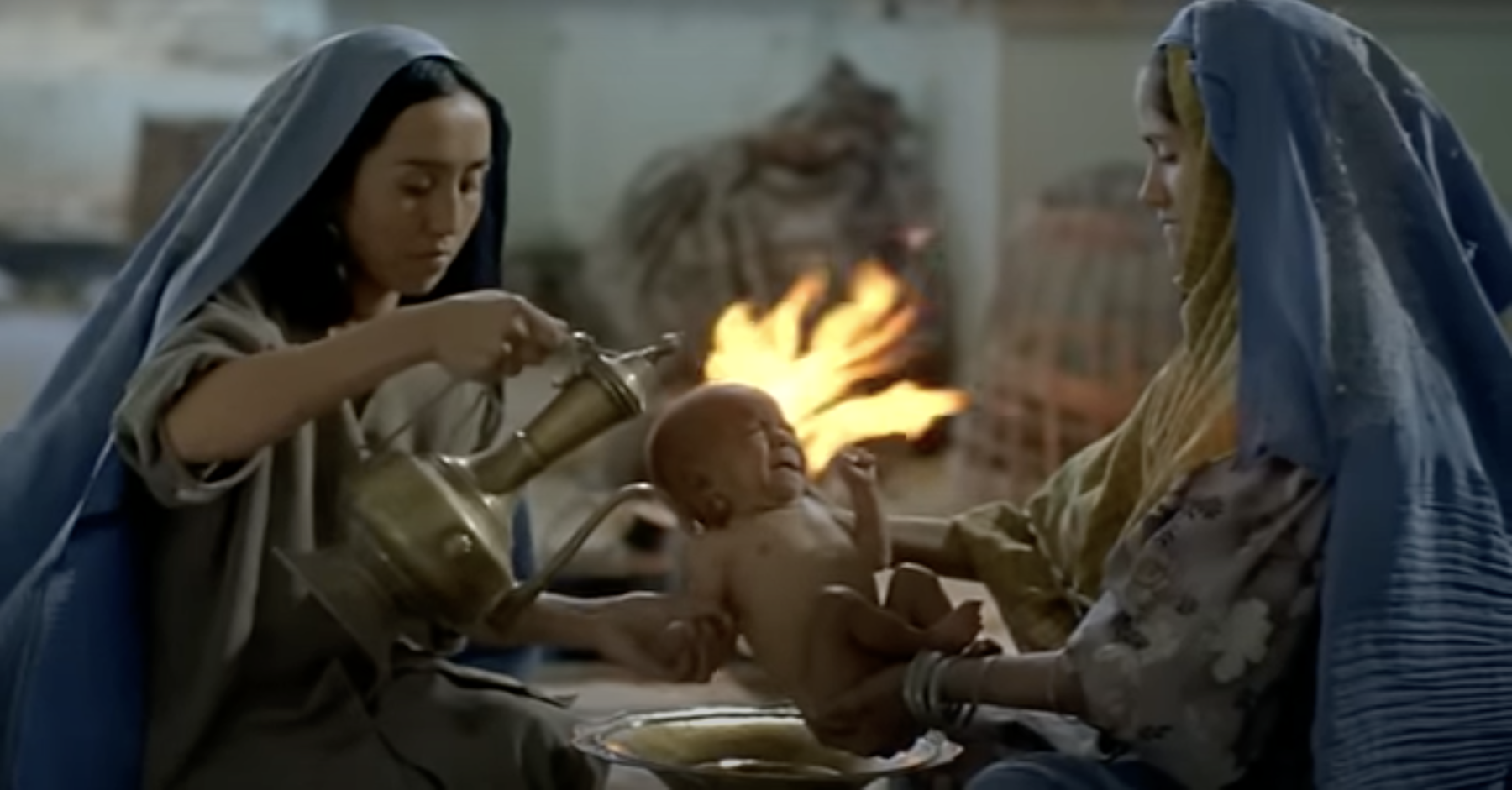
Caring for Leilomah's sick child.
On learning about Akhtar’s death from a refugee but unable to inform Leilomah, Noqreh’s father, a cart-driver, takes them towards the desert. When he asks Leilomah to wrap herself tightly so the baby doesn’t catch a cold, Leilomah looks into the distance, saying, “She’s not crying. She doesn’t take milk either,” and once again asks her father-in-law what she must do. Not boding well for what is to come, it is the figure of Leilomah’s daughter that is unsettling in its distinction from the others. While several characters provide glimpses of hope or possibilities of a better future—for instance, when girls are debating about women being presidents or Noqreh commands a French soldier—Leilomah’s daughter appears as a foreboding yet persisting character. It is as if she does not entirely fit the figure of bare life, even as she most meets its conditions.
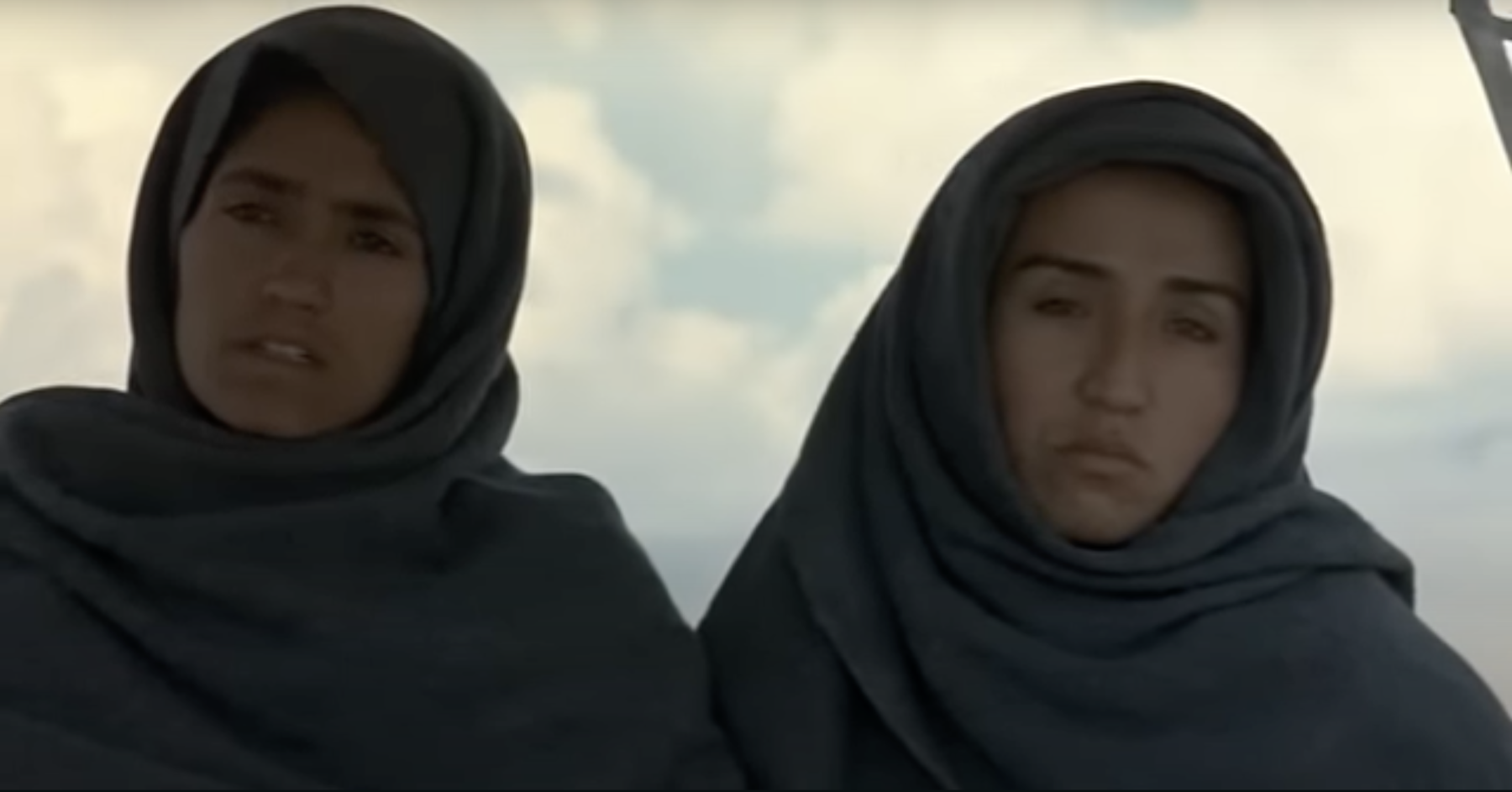
Leilomah realises her baby is not crying.
Perhaps it is her temporal attachment to the fact of birth—which should have entitled her to citizenship—but unlike the others, her situation seems unique because it is almost as if not only has she been abandoned by the state, but she has not even been able to enter into the social contract. Sacred life is life that can be killed but not sacrificed, with the zone of indistinction being between the sacred and profane, sacrifice and homicide, man and beast, life and death. This child, who, as the film progresses, is dying, half-dead, and undead, opens up yet another zone of indistinction—that between the dead and the undead, between life and dying. She represents life that can be left to be killed and not sacrificed but given back to God, albeit in a gesture that questions the very existence of the sacred. And yet, this gesture is not a foreclosure of the sacred but rather a plea for evidence of the sacred amidst bare life.
The child undergoes a transformation in the film, from weakly surviving on her mother’s meagre amounts of milk, to gradually ceasing to cry. The lack of food and the loss of ability to even cry or call out for help as the child’s body turns cold and blue is striking amidst the helpless plea of Leilomah, who is worried that her child has frozen. It is here that a marked shift happens in the film; first, the father lights the cart to provide heat for the child and then digs a burial ground for her. Both these segments convey a numbing anticipation of the hopeless eventuality of death and the closure of hope, which had enabled Noqreh's family to continue seeking refuge in their bare state of life.
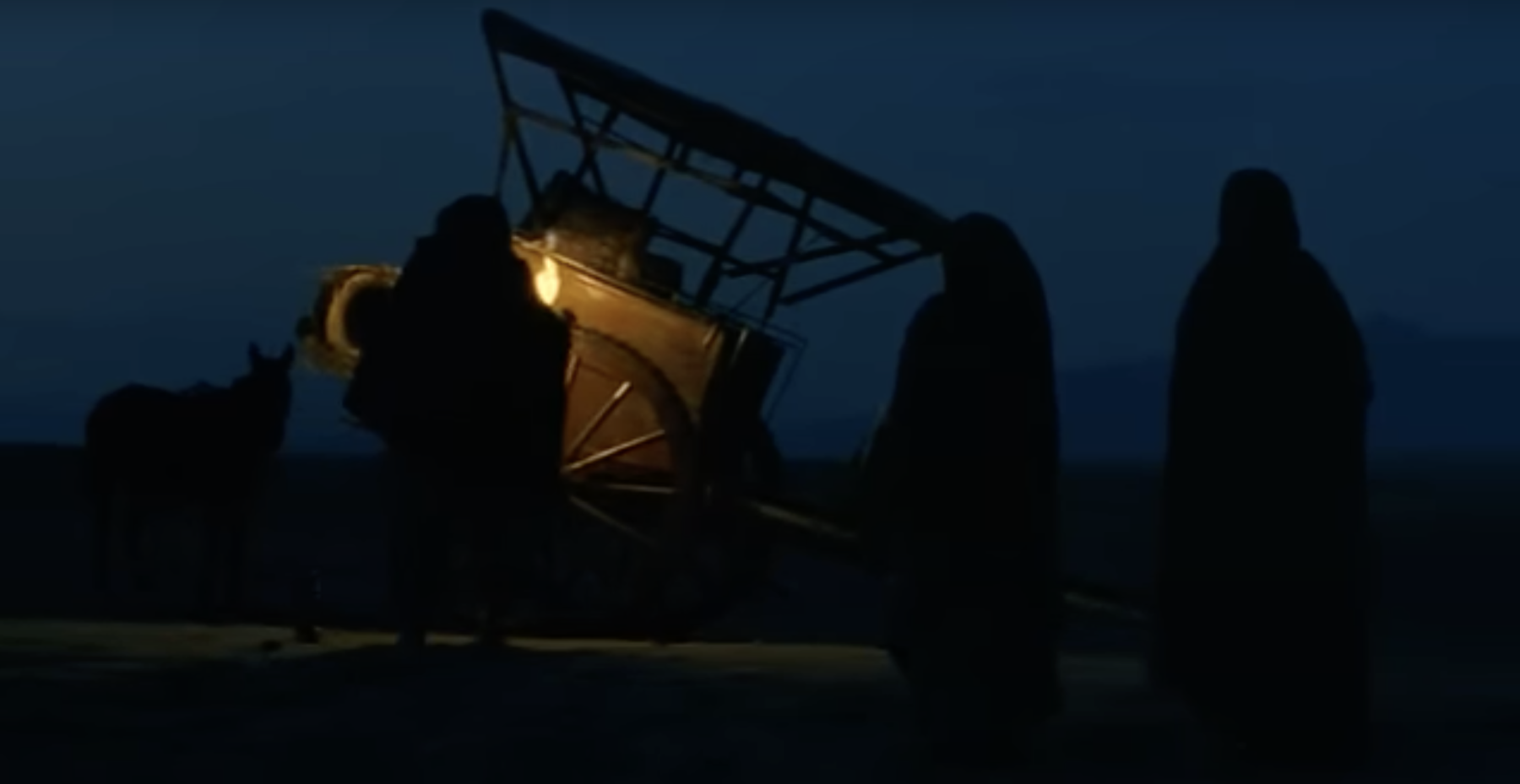
Noqreh's father burning the cart.
In the first segment, the burning of the cart signals an intimate blurring of man and beast, and appears to reclaim the humanity of Noqreh's father. Saying he is burning the cart to relieve the horse of its burden almost reads as a farce amidst the unspoken death of the child, revealing a final but unspeakable attempt at firing life into the child. A moving melancholic sequence toward the end of the film is preceded by Noqreh’s father telling his horse, “My child, how do I make a fire? My grandchild is frozen. You only understand hay and barley.” Lighting the cart to fire, he circles around it with the no-longer-living but not-yet-dead child in his arms. This act almost seems like a sacred ritual, not as a sacrifice of the child but as an attempt to bring it back from its state of being undead.
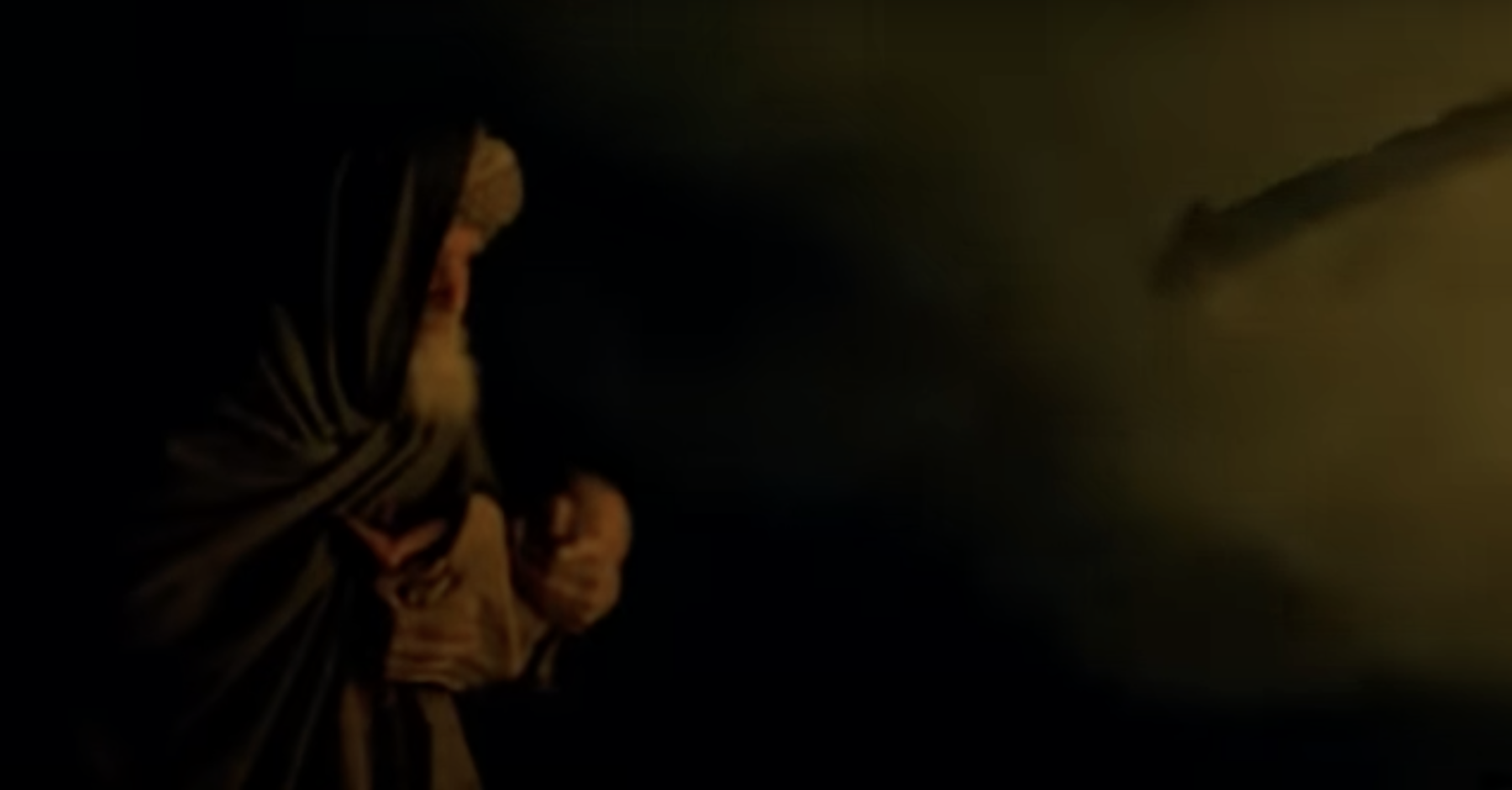
Noqreh's father circling around the cart with the baby in his arms.
However, when the wheel of the cart crashes and the father watches over the child, searching for a sign of return but finding none, the child seems to pass slowly further into this space of the undead. And with it, the father too moves into a hardened silence. Rather than declare the child dead, Noqreh’s father maintains that the child will wake up: “Not anyone in deep sleep is dead. She’s not dead. She’ll wake up sometime.” It is as if he stays with the child, in the space between dead and undead, despite knowing that she is not alive.
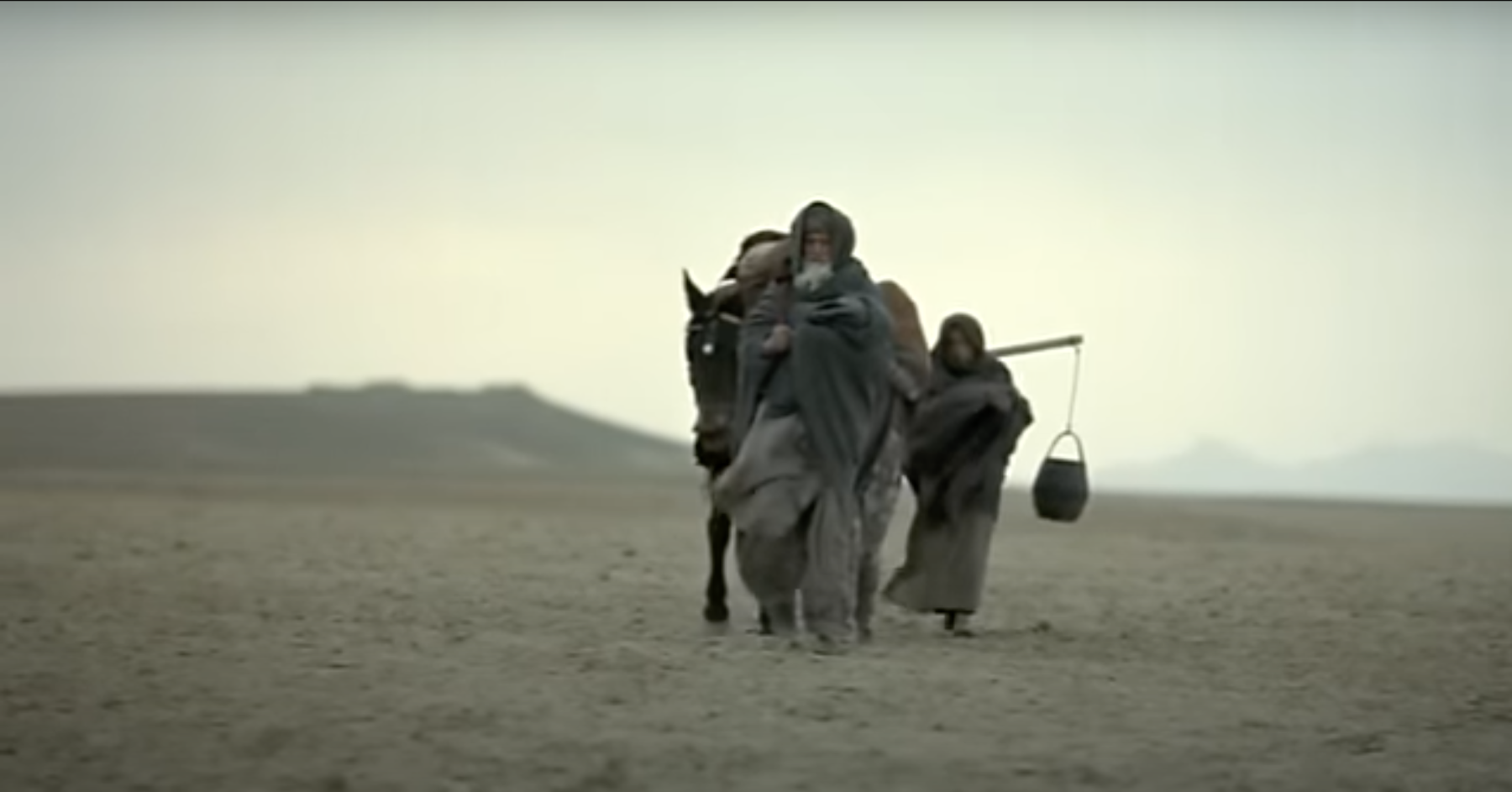
Noqreh, her father and Leilomah continue towards the desert in search of help.
Later, while digging the ground to bury his grandchild, he tells the stranger on his way to Kandahar to prevent the turning over of Osama bin Laden to the infidels that he is too late. America has already invaded Afghanistan. In doing so, he opens up yet another space between the sacred and profane. The father’s statement, “As if, God forbid, God is dead,” straddles not the presence and absence of God but rather the absence of God in his very presence. And when the stranger replies that mules, ox, and seas die but God doesn’t die, he responds that Kabul has become blasphemous and God profane. As he says these words, he finishes digging a grave for his son’s daughter, who has not yet been named dead. He asks God to take back what he gave, even as the stranger insists that since there is no town left to go to and nobody to ask where to go, he will just sit there forever.
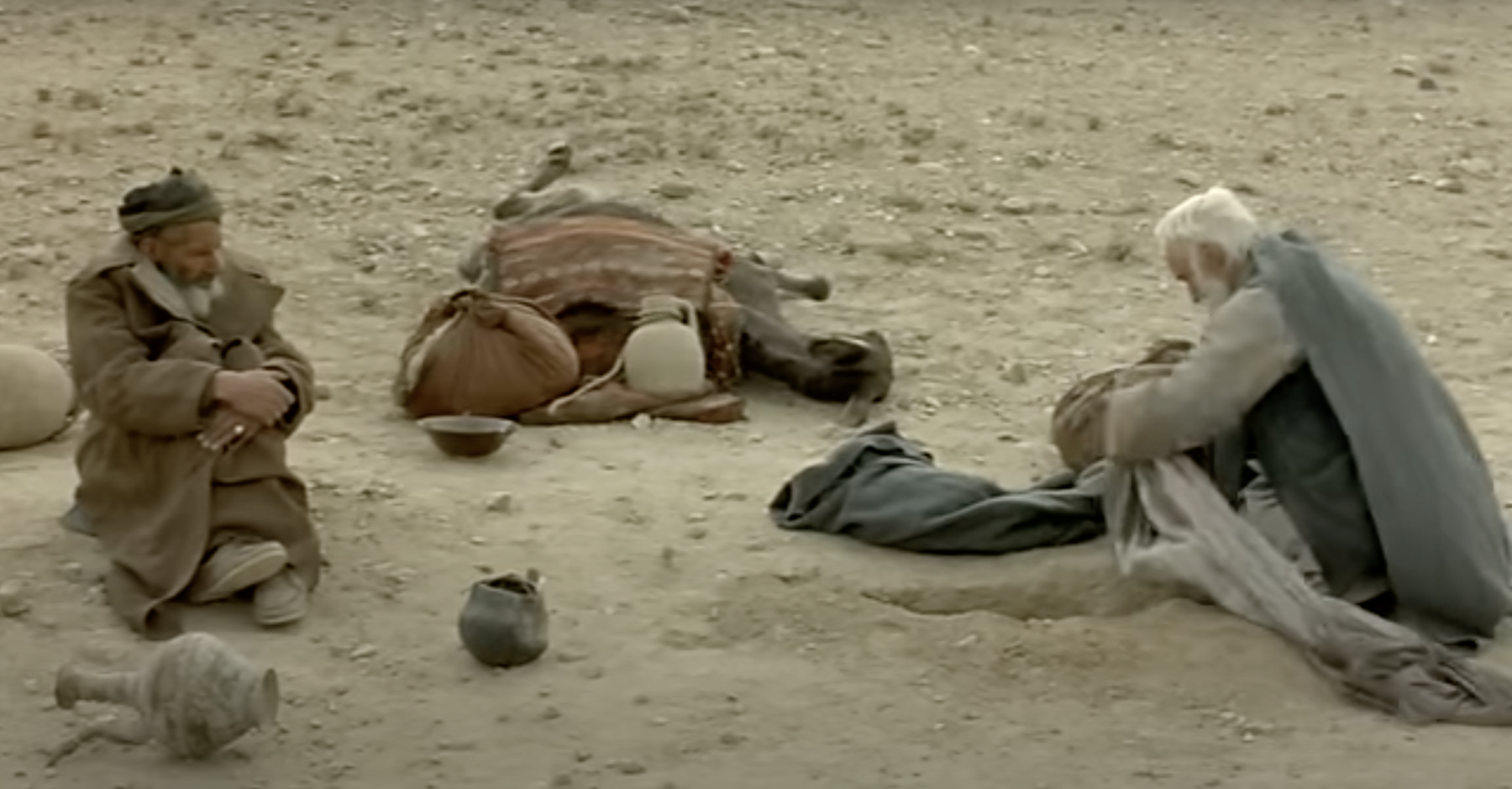
Noqreh's father digging a grave for his grandchild.
With the last sequence of the film being Noqreh and Leilomah walking into the endless desert, it would seem that the burial and the complaint about the death and profanity of God is yet another sign of bare life. But in a hushed voice, a woman sings, “It was five in the shade of the afternoon,” a line from Federico García Lorca’s poem about flourishing against the odds. By first abandoning and then re-articulating the separation between the sacred and profane, the film disrupts the zone of indistinction between the two. In other words, it allows for the slipping into one or the other, rather than a blurring of the boundaries in between. Here, life, when allowed to be left to die, calls upon the sacred not to accept it as sacrifice, but to take responsibility for it and the profanity of its fate of being left to die.

Noqreh and Leilomah walk into the expanse of the desert.
It is a prayer for the sacred, as Palestinian poet, revolutionary, and spokesperson for the Popular Front for the Liberation of Palestine, Ghassan Kanafani, articulates:
I wish children didn't die
I wish they would be temporarily
elevated to the skies until the war ends.
Then they would return home safe,
and when their parents would ask them:
"where were you?" they would say:
we were playing in the clouds."
Reading this film in the present is a reminder of the undead, the not-yet-dead, the children under the rubble in Gaza—faced with bombs and death in Jabalia, Al-Maghazi and Nuseirat refugee camps, with “barely a drop (of water) to drink” as per UNICEF estimates—that offer the condition for resistance, by asking us as citizens to consider their humanity not as exception, but as foundational to our being in the world.
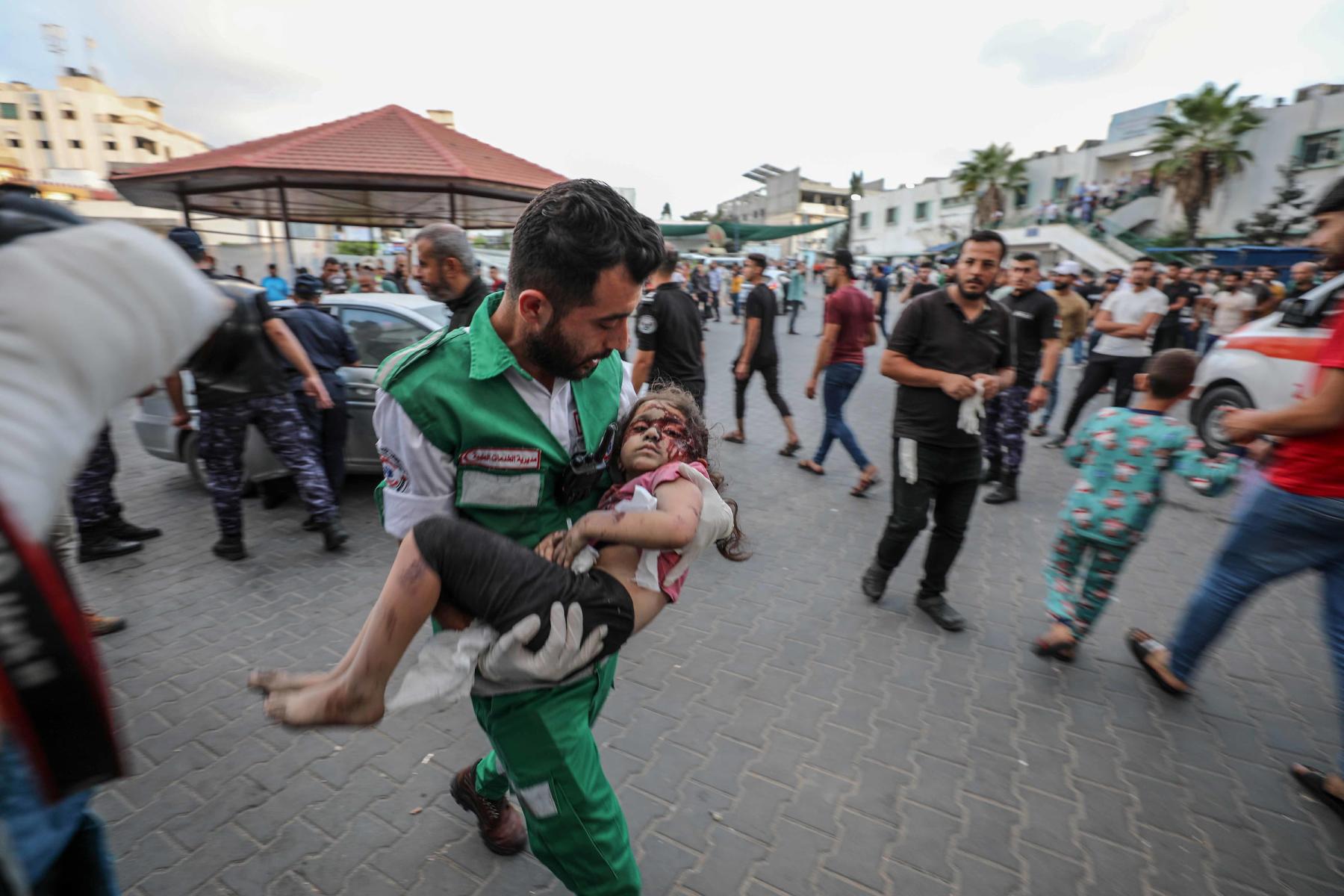
Medics transport an injured Palestinian child into Al-Shifa hospital in Gaza City following an Israeli airstrike on October 11, 2023. (Image courtesy of Wikimedia Commons.)
In case you missed reading the first part of the essay, you can access it here.
To learn more about films about Palestine, read Najrin Islam’s three-part series on the politics of images in Palestine through the themes of exile, speculative fiction and catastrophe. Also read Ankan Kazi’s reflections on Shaina Anand’s film Al Jaar Qabla al Daar (The Neighbour Before the House, 2009–11).
To learn more about representations of the conflict-ridden Afghanistan, revisit Najrin Islam’s essay on Roya Sadat’s cinema and a two-part conversation with Mariam Ghani, as well as Ankita Ghosh’s conversation with Aziz Hazara.
All images, unless specificed otherwise, are stills from At Five in the Afternoon (2003) by Samira Makhmalbaf, courtesy of the artist.




